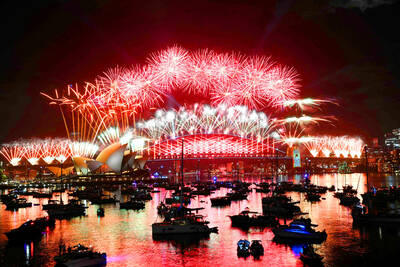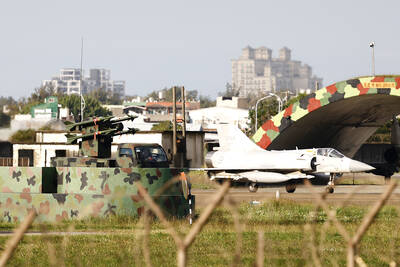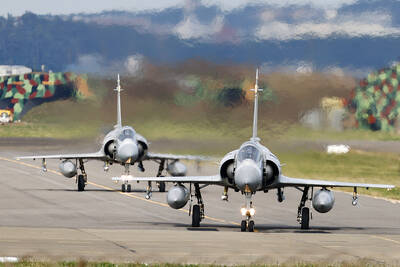Boeing Co has committed to building a longer version of its fuel-efficient 787 jet to meet demand from several airlines, the head of the new airplane program said yesterday.
"It's not a matter of if, it's a matter of when, and finalizing some details around configuration," Mike Bair, vice president and general manager of the 787 program, said in a conference call with reporters.
The 787-10 will carry approximately 300 passengers, about 50 more than the largest of three models the company had previously said it would build.
While some details of the design have yet to be completed, such as the precise seating capacity and how far the plane will fly, Bair said Boeing expects to begin delivering it in the final quarter of 2012.
Bair said "about a dozen" differnet carriers have expressed serious interest in a stretch version of the 787, but the only one that he mentioned by name was Emirates Airlines, a growing carrier based in the United Arab Emirates.
Initially, Boeing had resisted the call for a larger 787, fearing it might steal sales from an extended-range version of its 777. Then more airlines started clamoring for it.
"Early on, Emirates was pretty much a lone wolf in their interest in the airplane," Bair said. "But as time has marched on, and we've talked to other carriers, it's become pretty clear that the interest is more widespread than just Emirates."
Qantas Airways Ltd of Australia has also said it would be interested in a larger 787 if Boeing built it.
Chicago-based Boeing, which assembles most of its commercial airliners in the Seattle area, has said that its twin-engine 787s will be more fuel-efficient than any other plane flying today, in part because the planes will be made largely from composite materials, which are a lot lighter and far more durable than aluminum.
The 787-8 will be the first model that airlines will fly. It's scheduled to enter service in 2008, followed by the shorter-range version 787-3 the following year.
The largest of those three, the 787-9, will carry about 250 passengers just over 16,000km when it enters service in 2010.
Adding more seats to the 787-10 will mean it won't fly quite as far as the 787-9, but will have as much, if not more, cargo space, Bair said.
Industry analysts have said that it's smart for Boeing to offer a larger 787, since its chief rival, Airbus SAS, is designing its A350-900 to compete with both the 787-9 and the 777-200ER.
European Aeronautic Defence and Space Company is the majority shareholder of Airbus, which is based in Toulouse, France.
To date, Boeing has received 298 firm orders and 88 commitments from a total of 28 airlines for 787 models.
also see story:
Spirit Aerosystems soars under a Taiwanese boss

Taiwan is gearing up to celebrate the New Year at events across the country, headlined by the annual countdown and Taipei 101 fireworks display at midnight. Many of the events are to be livesteamed online. See below for lineups and links: Taipei Taipei’s New Year’s Party 2026 is to begin at 7pm and run until 1am, with the theme “Sailing to the Future.” South Korean girl group KARA is headlining the concert at Taipei City Hall Plaza, with additional performances by Amber An (安心亞), Nick Chou (周湯豪), hip-hop trio Nine One One (玖壹壹), Bii (畢書盡), girl group Genblue (幻藍小熊) and more. The festivities are to

Auckland rang in 2026 with a downtown fireworks display launched from New Zealand’s tallest structure, Sky Tower, making it the first major city to greet the new year at a celebration dampened by rain, while crowds in Taipei braved the elements to watch Taipei 101’s display. South Pacific countries are the first to bid farewell to 2025. Clocks struck midnight in Auckland, with a population of 1.7 million, 18 hours before the famous ball was to drop in New York’s Times Square. The five-minute display involved 3,500 fireworks launched from the 240m Sky Tower. Smaller community events were canceled across New Zealand’s

‘IRRESPONSIBLE’: Beijing’s constant disruption of the ‘status quo’ in the Taiwan Strait has damaged peace, stability and security in the Indo-Pacific region, MOFA said The Presidential Office yesterday condemned China’s launch of another military drill around Taiwan, saying such actions are a “unilateral provocation” that destabilizes regional peace and stability. China should immediately stop the irresponsible and provocative actions, Presidential Office spokeswoman Karen Kuo (郭雅慧) said, after the Chinese People’s Liberation Army (PLA) yesterday announced the start of a new round of joint exercises around Taiwan by the army, navy and air force, which it said were approaching “from different directions.” Code-named “Justice Mission 2025,” the exercises would be conducted in the Taiwan Strait and in areas north, southwest, southeast and east of Taiwan

UNDER WAY: The contract for advanced sensor systems would be fulfilled in Florida, and is expected to be completed by June 2031, the Pentagon said Lockheed Martin has been given a contract involving foreign military sales to Taiwan to meet what Washington calls “an urgent operational need” of Taiwan’s air force, the Pentagon said on Wednesday. The contract has a ceiling value of US$328.5 million, with US$157.3 million in foreign military sales funds obligated at the time of award, the Pentagon said in a statement. “This contract provides for the procurement and delivery of 55 Infrared Search and Track Legion Enhanced Sensor Pods, processors, pod containers and processor containers required to meet the urgent operational need of the Taiwan air force,” it said. The contract’s work would be